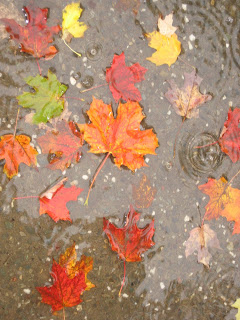
Leaving Maine, we hit the turnpike and quickly passed through a patchwork quilt of states – New Hampshire, Connecticut, New York, Massachusetts, Pennsylvania – steeped in history. Each little town in Pennsylvania seemed to have at least one historical marker commemorating a visit by George Washington, a battle or other momentous event. We couldn’t help but be struck by just how young the West is, when towns in this part of the country date back to the early 1700s.
In Massachusetts, we spent a morning at Old Sturbridge Village, a living re-enactment of life in the 1830s, when the industrialized age had begun and New Englanders no longer had to fabricate necessities, instead purchasing factory-made items like cookware and tools.
Wood smoke wafted through the village, and the morning stillness was broken only by the clip-clopping of horses’ hooves and the clucking of chickens as we entered old houses and outbuildings to watch demonstrations of spinning, baking and forging. A young man used a pole to reach apples at the top of the 100-year-old trees in a sun-dappled orchard, where they were collected by an ox-drawn cart and hauled to the cider press.
We even received some impromptu lessons in livestock. Chatting with the affable driver of a horse-drawn coach, I noticed the team looked nearly identical to the horses pulling visitors in wagons through Acadia Park. "Are they Belgians?” I asked. “Yes,” he beamed, “the best horses for this kind of work.” Everyone knows Clydesdales from the commercials, he went on to say, adding that they’re not the brightest steeds in the barn.“They’re only good for plowing and pulling beer wagons. They don’t have the intelligence, heart and stamina of Belgians.”
It was he, it turned out, who had sold the horses to the Maine operator. As he launched into a story of pulling a circus wagon in Milwaukee, putting Vicks Vapor Rub in the horses’ nostrils so they wouldn’t bolt at the scent of lions and tigers, it was clear he could talk horses all day, so we wished him well and moved on.
Later, watching an ox walk round and round the cider press grinding apples, we learned that it was bovines who’d been the real “workhorses” of the time. Horses were a luxury, costing the farmer more in feed and care. Cows were kept for breeding and milk, but male calves usually ended up on the dinner table, the volunteer told us. But if the farmer needed a new team, the steers were neutered and trained virtually from birth until they could work and respond to voice commands.
“This guy knows about 20 words,” bragged his young handler, pulling back on the beast’s fearsome-looking horns to capture his best camera angle.
Lancaster, PA is the heart of Pennsylvania Dutch country, and it was there we headed next. Arriving on a late Sunday afternoon, we saw families dressed in Sunday best, walking or riding in buggies from church service. We learned that the gray wagons belonged to Amish and the black to Mennonites, although we couldn’t tell the adherents of each sect by their dress. Many children and several women used adult-size scooters for transport, pushing along with one foot. The Amish don’t ride bicycles, apparently considering them among the modern conveniences they eschew.
The next day we toured the countryside, passing through towns like Bird-in-Hand and Intercourse, both settled in the early 1700s. Residents spoke German among themselves, and English with an incongruous Irish-sounding lilt to visitors, all of whom are considered “English.” With sunny smiles and sweet dispositions, the Amish strike visitors as supremely content with their lives, despite the hoards of curious tourists who constantly sneak photos.
It was wash day, and laundry fluttered from lines like Tibetan prayer flags, the Amish ingeniously using utility poles for laundry lines, although not for electricity. We bought shoo-fly pie and homemade root beer and stopped at another farm for beautiful organic brown eggs, $1.25 a dozen on the honor system. We felt slightly uncomfortable following the sign’s directions and opening the door to the house, where we found the eggs in a cooler, but a calico cat seemed to be the only one home. We put our money in the box and headed out, finding the simple exchange oddly gratifying.
Writing this tonight without electricity atop Loft Mountain in Shenandoah National Park, where swirling fog obscures all but the nearest trees, the sense of being in a different time as well as place persists.
Next, a meet-up with friends and visit to the nation’s Capitol.
For photos: http://picasaweb.google.com/happytwo.mcwilliams/TripEast8NewEngland?authkey=Gv1sRgCIquvvG9sriv1AE&feat=directlink


